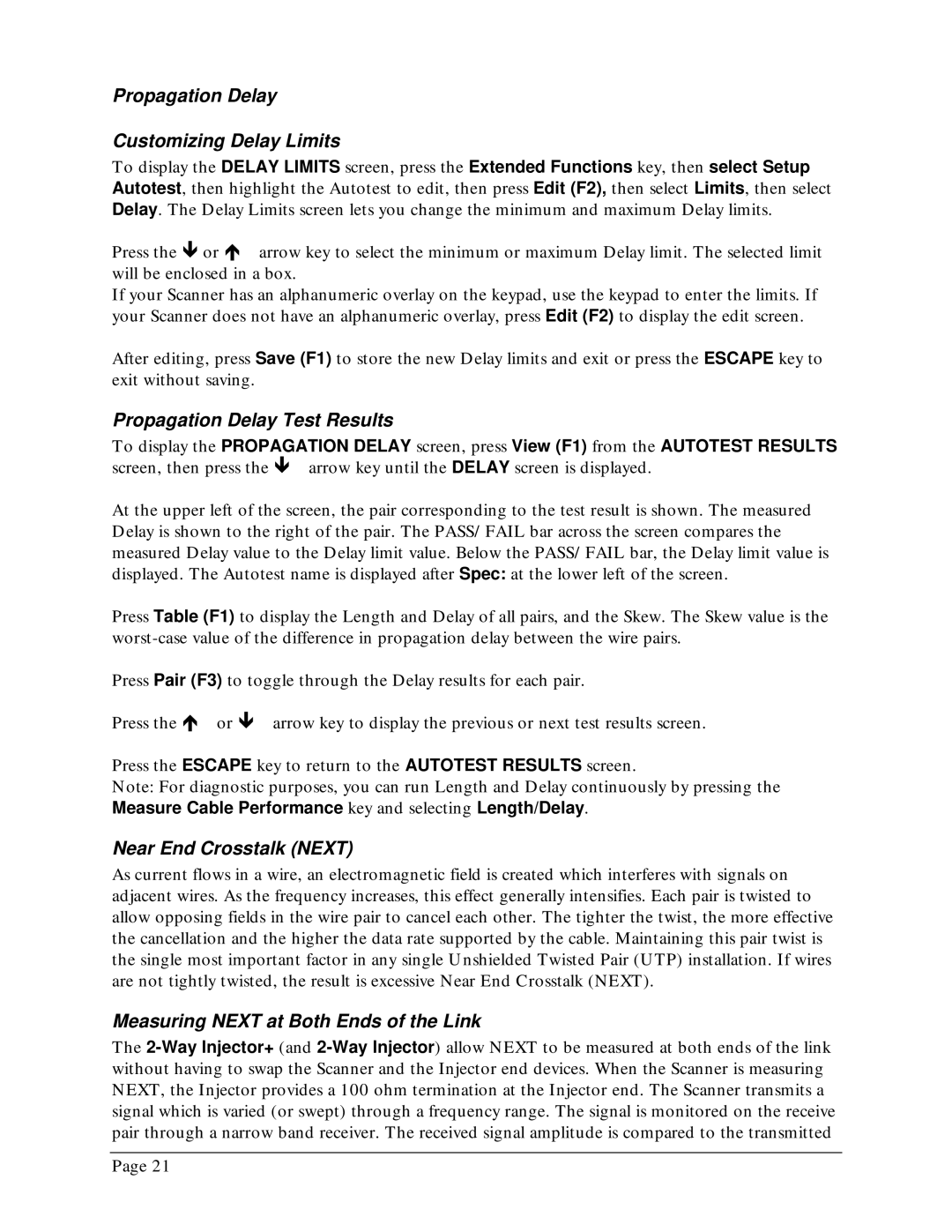Propagation Delay
Customizing Delay Limits
To display the DELAY LIMITS screen, press the Extended Functions key, then select Setup Autotest, then highlight the Autotest to edit, then press Edit (F2), then select Limits, then select Delay. The Delay Limits screen lets you change the minimum and maximum Delay limits.
Press the or ∇ arrow key to select the minimum or maximum Delay limit. The selected limit will be enclosed in a box.
If your Scanner has an alphanumeric overlay on the keypad, use the keypad to enter the limits. If your Scanner does not have an alphanumeric overlay, press Edit (F2) to display the edit screen.
After editing, press Save (F1) to store the new Delay limits and exit or press the ESCAPE key to exit without saving.
Propagation Delay Test Results
To display the PROPAGATION DELAY screen, press View (F1) from the AUTOTEST RESULTS screen, then press the arrow key until the DELAY screen is displayed.
At the upper left of the screen, the pair corresponding to the test result is shown. The measured Delay is shown to the right of the pair. The PASS/FAIL bar across the screen compares the measured Delay value to the Delay limit value. Below the PASS/FAIL bar, the Delay limit value is displayed. The Autotest name is displayed after Spec: at the lower left of the screen.
Press Table (F1) to display the Length and Delay of all pairs, and the Skew. The Skew value is the
Press Pair (F3) to toggle through the Delay results for each pair.
Press the ∇ or arrow key to display the previous or next test results screen.
Press the ESCAPE key to return to the AUTOTEST RESULTS screen.
Note: For diagnostic purposes, you can run Length and Delay continuously by pressing the Measure Cable Performance key and selecting Length/Delay.
Near End Crosstalk (NEXT)
As current flows in a wire, an electromagnetic field is created which interferes with signals on adjacent wires. As the frequency increases, this effect generally intensifies. Each pair is twisted to allow opposing fields in the wire pair to cancel each other. The tighter the twist, the more effective the cancellation and the higher the data rate supported by the cable. Maintaining this pair twist is the single most important factor in any single Unshielded Twisted Pair (UTP) installation. If wires are not tightly twisted, the result is excessive Near End Crosstalk (NEXT).
Measuring NEXT at Both Ends of the Link
The
Page 21
